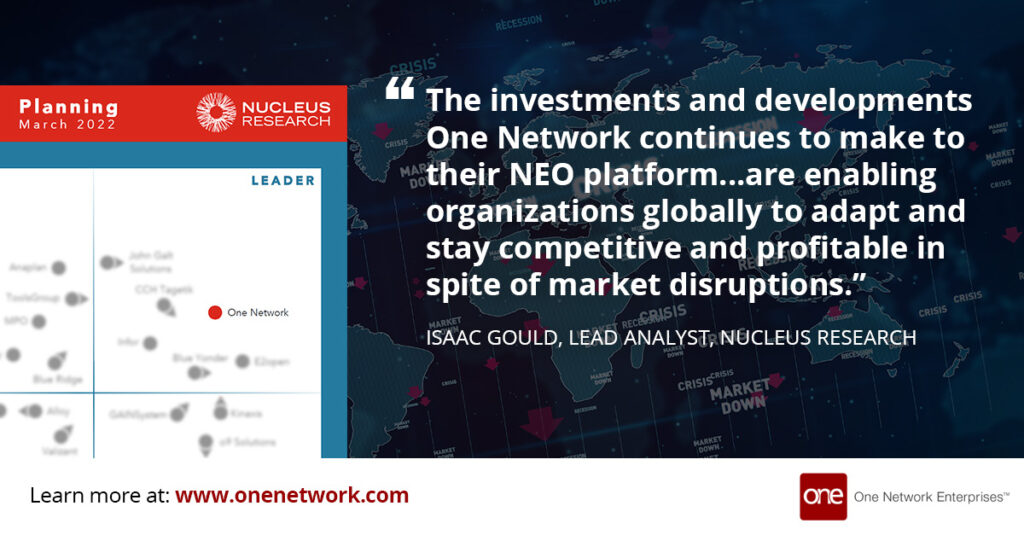This post has already been read 2642 times!
Supplier relationship management (SRM) is a critical part of running an effective supply chain. Organizations must regularly assess their suppliers and how they fit into their larger business strategy to optimize their supply chains. New technologies offer new opportunities to do just that.
Digitization is sweeping across supply chains. It’s a key priority for most supply chain leaders, though more than half have yet to develop a formal digital transformation roadmap. As these efforts ramp up, SRM is changing, and it becomes increasingly important to embrace digital technologies.
The digital age is shifting SRM best practices as it introduces new possibilities and risks. Here’s a closer look at how digitization is changing supplier relationship management.
Increased Potential for Visibility
Digital technologies make it easier than ever for organizations to increase visibility across their supplier base. Internet of things (IoT) devices can provide real-time data like asset locations, energy consumption, product quality in transit and more. Pairing that information with tracking solutions like digital supply chain networks, blockchain, or apps in the cloud, can give businesses a closer look into their suppliers’ operations.
Digital technologies make it easier than ever for organizations to increase visibility across their supplier base, and get real-time data like asset locations, energy consumption, product quality, and more. | How Digitization is Enhancing SRM Click To TweetWhile the project faces hurdles and was put on hold, Walmart demonstrated the benefits when it implemented a blockchain tracking solution for its produce supply chain. The company developed a solution with IBM to track 25 products from five suppliers through accessible, immutable blockchain records. As a result, Walmart reduced its time to confirm products’ place of origin from seven days to just 2.2 seconds.
The challenge with the project has been getting partners to adopt the complex blockchain technology. However, other platforms, e.g. a digital supply chain network, offer similar and even superior functionality, and they are less costly and much easier to implement.
Systems like this require buy-in from both sides of the transaction. However, once in place, they provide unparalleled insight into supplier business practices, efficiency and more. That insight enables more effective SRM decision-making.
Chances to Build Trust
Similarly, digital supplier relationship management provides new opportunities to establish trust with customers and business partners. If organizations want to build trust with suppliers and 3PLs, they must also prove their trustworthiness. Offering real-time visibility through the IoT, digital supply chain networks, blockchain, and related technologies lets companies embrace that transparency more effectively.
Supply chains can also use these platforms to build trust with their customers. Almost nine in 10 global consumers prioritize buying from companies with ethical sourcing, with 83% willing to pay more for that certainty. Providing customers with chain of custody or sourcing information on a digital network that shows where companies source from will establish that transparency, boosting business.
9 in 10 global consumers prioritize buying from companies with ethical sourcing. Companies can benefit significantly from sharing chain of custody and sourcing information with consumers. Click To TweetUnilever has started to lean into this trend, using cloud platforms and artificial intelligence (AI) to provide more visibility into their sources’ relationships with deforestation. As digitization becomes the norm, customers, partners and third parties may come to expect this level of transparency in SRM.
Higher Efficiency
Technology is also making supplier relationship management a more efficient process. SRM involves a significant amount of repetitive data-heavy tasks, like reaching out to suppliers, updating records and parsing this information for actionable insights. New technologies can automate and streamline much of this work to ensure it doesn’t take much time.
Robotic process automation (RPA) can manage tasks like data entry and scheduling to free human supply chain managers to focus on other, more pressing work. It also handles these processes far faster and more accurately than human workers. In one study, 90% of RPA users experienced increased accuracy, and 86% noticed higher productivity.
Cloud platforms can further streamline the management process by providing a single point of access for all supplier information. Organizations can then compare their suppliers and see how they’re meeting their goals more efficiently.
New Savings Opportunities
Digital SRM’s efficiency and transparency can help supply chains reduce ongoing expenses. That starts with being able to compare suppliers more easily through data analytics and the cloud’s accessibility.
As organizations gather more supplier data and consolidate it into a single access window, they can see how and where they can improve. A company may find a different packaging supplier offering minimalist packaging, which saves money on materials, then use their cloud platform to easily compare these savings to their current model. Analytic technologies like AI can automate these comparisons for faster, more reliable insights, too.
Back-office automation through RPA will also help save money by reducing errors and maximizing productivity. With less to correct and more time to focus on value-adding tasks, SRM workflows will be more cost-efficient.
Rising Cyber Risks
Digitization in supplier relationship management does carry some risks, in addition to its many benefits. Notably, digital SRM introduces higher cybersecurity risks. As supply chains implement more digital technologies and share more data between parties, cyber criminals have more to gain from targeting them, and there are more points of vulnerability.
"Digitization brings many benefits, but also risks, such as increased cybersecurity risk. More data, more partners, more digitized processes, means more points of vulnerability and higher reward for cyber criminals." Emily Newton @ReadRevmag Click To TweetAs organizations’ suppliers become increasingly digitized, vulnerabilities in these partners’ networks can affect those downstream in the supply chain. A 2022 ransomware attack on Kojima Industries caused Toyota to halt 28 production lines, affecting a third of its global output. Even though the attack didn’t target Toyota directly, it harmed the company by disrupting its supplier.
Given these rising risks, modern SRM must consider suppliers’ cybersecurity. Organizations must ensure they only partner with companies that meet high security standards. Even then, reviewing and limiting third-party access permissions and taking similar cybersecurity measures is best.
Changing Skills Demands
Another potential obstacle supply chains may face amid digital transformation is a rising need for IT talent. If businesses hope to capitalize on digital SRM’s benefits to their fullest potential, they must have the relevant experience and skills to do so. Consequently, the ideal SRM skillset is shifting.
Despite rising investments in new technologies, 83% of supply chain leaders say these projects haven’t fully delivered their expected results. At the same time, only 7% said upskilling their workforce to teach them digital skills was a priority. Addressing that gap will help supply chains make the most of these technologies.
Digital supplier relationship management requires a digital-first mindset from start to finish. Businesses must seek to hire employees with skills and experience in technologies like IoT, AI and blockchain and offer upskilling opportunities to their current workforce. Building the workforce of the future is imperative, otherwise SRM initiatives will struggle to stay competitive.
Digitization Transforms Supplier Relationship Management
Supply chain leaders have heard much about digital transformation at this point. However, amid that buzz, it’s easy to miss the gravity of the word “transformation.” Embracing this trend means making significant changes to how the business operates, so supply chains must be ready for change.
Supplier relationship management is evolving. Digital technologies promise revolutionized efficiency and transparency but require a new approach to security, trust and workforce management. Adapting to these changes is key to fully capitalizing on the benefits of digitization.

Recommended Posts
- What Constitutes a True Network?
- Real-World Supply Chain Robotics
- Supply Chain Trends to Watch
- Fielding Software to Defense: A Journey of Ineffectiveness, Inefficiency, and Frustration
- My Biggest Takeaways from NRF 2024 – Retail’s Big Show
- 6 Ways Technology Makes the Supply Chain More Efficient - October 25, 2023
- How Digitization is Enhancing Supplier Relationship Management - May 9, 2023
- A Guide to choosing the Best Pallet Wrapping For Your Needs - November 28, 2022
